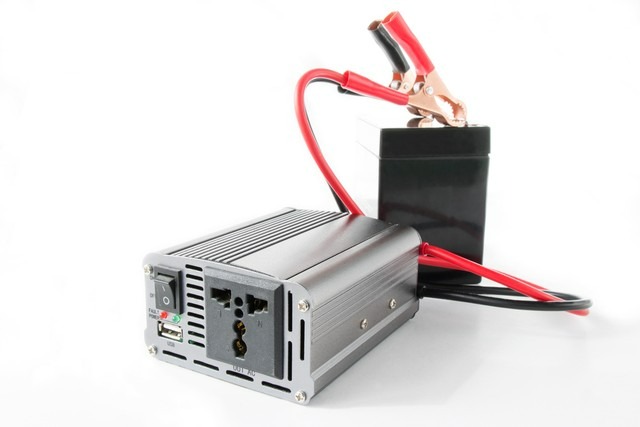The Importance of Wind Turbine Inverters
Wind power is crucial for the future energy landscape and relies on inverters as a key component. The selection of an appropriate wind turbine inverter is vital for optimal system performance, reliability, and longevity. An efficient inverter enhances power generation, maintains power quality, and extends the lifespan of the entire system.
The main functions of wind turbine inverters include:
Convert voltage:
Convert the AC voltage generated by the wind turbine into a DC voltage that can be directly connected to the power grid.Adjust power: Adjust output power according to changes in wind speed to ensure maximum power tracking.
Grid connection:
Connect the wind power generation system to the power grid and meet the technical requirements of the power grid.Monitoring and protection: Monitor and protect the entire wind power generation system to ensure safe and stable operation of the system.Key factors in choosing a wind turbine inverter

When choosing a wind turbine inverter, there are several key factors to consider:
1. Input voltage range
The output voltage of different types of wind turbines is different, so it is necessary to choose an inverter that can adapt to the output voltage range of the wind turbine. Normally, the output voltage of wind turbines is between 380-690V.
2. Rated power
When selecting an inverter, it needs to be matched according to the rated power of the wind turbine. Generally speaking, the rated power of the inverter should be slightly higher than the rated power of the wind turbine to leave a certain safety factor.
3. Grid connection requirements
There are also differences in the technical indicators of grid connection in different regions, so it is necessary to choose an inverter that meets the local grid connection standards. Mainly including voltage, frequency, power factor and other indicators.
4. Environmental adaptability
The inverter needs to be able to adapt to harsh environmental conditions, such as high temperature, low temperature, high humidity, salt spray, etc. At the same time, dustproof and waterproof level requirements also need to be considered.
5. Reliability and maintainability
It is very important to choose an inverter with high reliability and easy maintenance. This can not only improve the operational stability of the system, but also reduce operation and maintenance costs.
6. Intelligent control function
Advanced inverters have rich intelligent control functions, such as maximum power tracking, reactive power compensation, fault diagnosis, etc., which can improve the performance of the entire wind power generation system.

How to correctly install and debug a wind turbine inverter
When installing and debugging a wind turbine inverter, you need to pay attention to the following key steps:
Reasonable layout:
The inverter should be installed in a location that is convenient for maintenance and ensures good ventilation and heat dissipation.
Electrical connection:
Carry out electrical wiring strictly in accordance with the instructions and ensure that each wiring point is firm and reliable.
Parameter setting:
Adjust various operating parameters of the inverter according to the actual conditions on site, such as voltage, frequency, power factor, etc.
Grid-connected debugging:
Carefully check various grid-connected technical indicators to ensure smooth grid-connected power generation.
Monitoring and maintenance:
Establish a regular inspection and maintenance system to detect and solve problems in a timely manner to ensure long-term stable operation.
Only after professional installation and debugging can the wind turbine inverter truly exert its due performance and provide reliable power support for the entire wind power system.
Technical development trends of wind turbine inverters
With the continuous advancement of new energy technology, wind turbine inverters are also constantly updated and iterated, mainly reflected in the following aspects:
Power density continues to increase:
The new generation of inverters have significant improvements in volume and weight, and the volume and weight per unit power are significantly reduced.
Conversion efficiency continues to improve:
The power conversion efficiency of the inverter is close to 99%, which greatly reduces the energy consumption loss of the system.
Enhanced intelligent control functions:
The inverter has a more intelligent control algorithm, which can realize advanced functions such as maximum power tracking and reactive power compensation.
Enhanced grid adaptability:
The inverter can quickly respond to changes in grid frequency, voltage, etc., to meet increasingly stringent grid connection requirements.
Improved reliability and maintainability:
The service life of the inverter is continuously extended, the failure rate is greatly reduced, and the maintenance cost is also reduced.
Decreasing costs:
With technological advancement and economies of scale, the cost of wind turbine inverters is continuing to decrease.
In general
Technological advancements in wind turbine inverters enhance power generation efficiency, grid connection quality, and reduce operation and maintenance costs. It is crucial to carefully consider factors like input voltage, rated power, grid requirements, environmental adaptability, and reliability when selecting the right inverter. Additionally, proper installation and debugging are essential for long-term stable operation. This article provides valuable insights to help you choose the ideal inverter for your wind power project.
